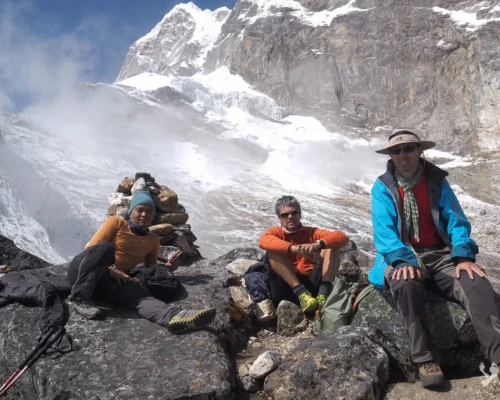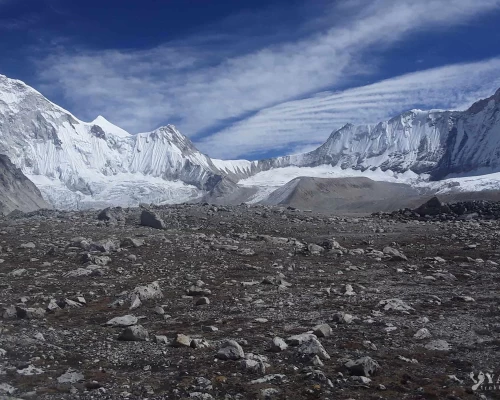Dual peak climbing Mera Peak (6476m) and Island Peak (6189m)
The dual peak climbing program has been designed for mountain enthusiasts who are seeking adventurous activities in the High Himalayas. It requires both in good physical shape and mentally daring to hike above 5000m and attempt the summit of snow-capped mountains. Embarking on the dual ascent of Mera Peak and Island Peak via Hinku Valley and Amphulaptsa Pass represents a tough and challenging journey endeavor.
Mera Peak is considered one of the major and popular trekking peaks in the Khumbu region. The Peak itself rises to the south of Everest and dominates the watershed between the heavily wooded valleys of the Hinku and Hongu Drangkas. The ascent of the Mera Peak climbing is technically not hard, however, the heavy snow and the labyrinth of crevasses can make the way longer to the summit. So, it demands enough mountaineering technical experience to scale the peak.
To approach Mera peak climbing the trek starts from Kathmandu with a drive up to Jiri and a trek to Lukla at 2800m. This is a good way to begin as it helps in developing physical fitness and well acclimatization. The other way, most of the people take a flight to Lukla and start trekking through rhododendrons and pine forests. Crossing the Zatra-La pass the trek is very steep but the reward is a view of Cho Oyu, the world's 6th highest mountain, and the NumburHimal.
Our base camp can be set up at 5,300m near Mera La on the Hongu side in the moraine below the ice. From here a high camp is set at 5,800m near a rock on the Mera Glacier.
The high camp provides us the view of glorious panoramic views of Kanchanjunga, Chamlang, Makalu and Baruntse, Amadablam, Cho Oyu, and Kangtega to the west. Everest is seen to the north over the massive unclimbed south face of Lhotse and the Nuptse/Lhotse ridge.
Ascending the Island peak (Imja Tse) 6189m
Island (Imja Tse) peak is common and easy with fascinating peak climbing in the Everest region. Island Peak climbing can be combined with Everest Base Camp and Gokyo Lake with the Cholapass trek. The ascent of the peak is technically not hard, however, the heavy snow and the labyrinth of crevasses can make the way longer to the summit. So, it demands enough mountaineering technical experience to scale the peak.
The base camp is probably set up at (5,087m), between Imja Tse and the lateral moraine of the Imja Glacier.
The climbing route is a steep grassy slope and small rocky steps up to 5500m, where we set up our high camp. From here we climb again on a rock at first, then cross a glacier, with crevasses, to reach a final steep ascent to the summit. Before arriving at the summit we have little difficulty due to steep climbing. In recent times the snow slopes below the summit have developed some large crevasses making the final ascent to the top difficult. Ropes are fixed for the final summit climb.







